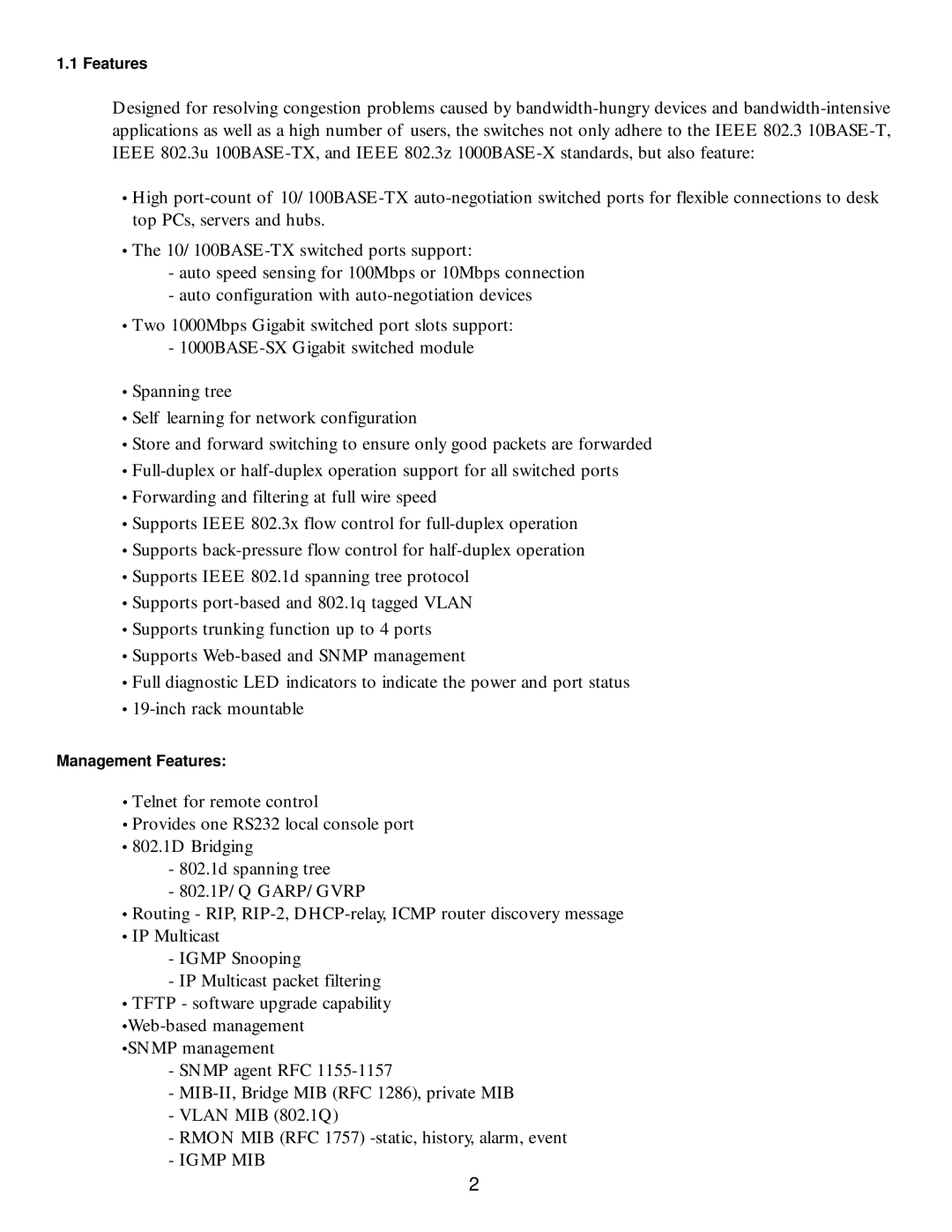1.1 Features
Designed for resolving congestion problems caused by
•High
•The
-auto speed sensing for 100Mbps or 10Mbps connection
-auto configuration with
•Two 1000Mbps Gigabit switched port slots support:
-
•Spanning tree
•Self learning for network configuration
•Store and forward switching to ensure only good packets are forwarded
•
•Forwarding and filtering at full wire speed
•Supports IEEE 802.3x flow control for
•Supports
•Supports IEEE 802.1d spanning tree protocol
•Supports
•Supports trunking function up to 4 ports
•Supports
•Full diagnostic LED indicators to indicate the power and port status
•
Management Features:
•Telnet for remote control
•Provides one RS232 local console port
•802.1D Bridging
-802.1d spanning tree
-802.1P/Q GARP/GVRP
•Routing - RIP,
•IP Multicast
-IGMP Snooping
-IP Multicast packet filtering
•TFTP - software upgrade capability
•SNMP management
-SNMP agent RFC
-
-VLAN MIB (802.1Q)
-RMON MIB (RFC 1757)
-IGMP MIB
2
